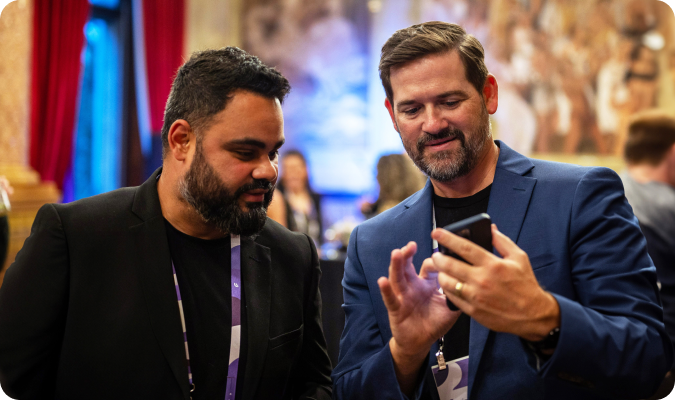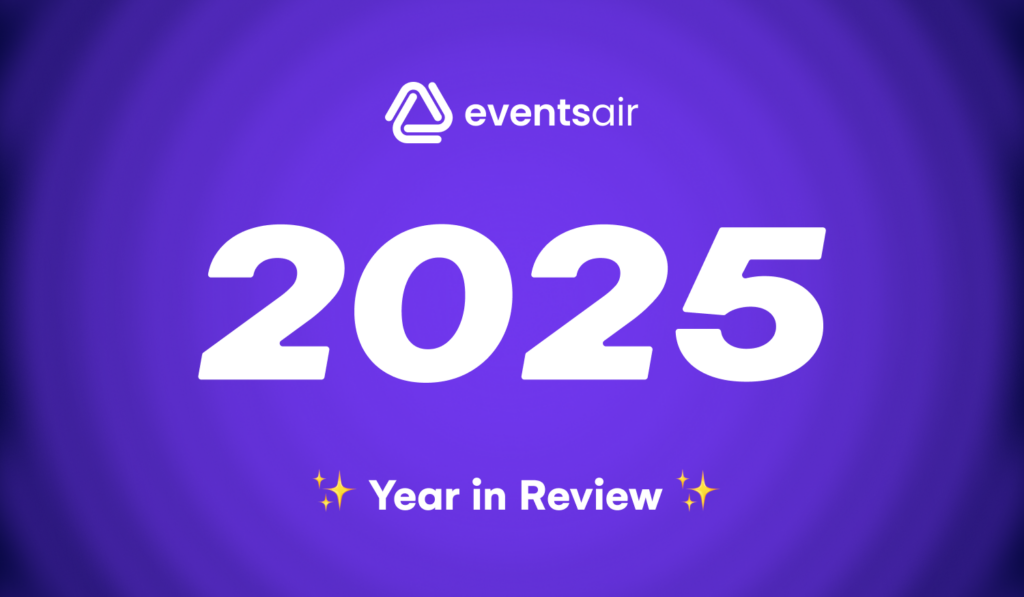
Gone are the days when we could deliver successful events simply by relying on Excel spreadsheets and a rolodex of business cards! Today’s professional event organizers rely on data and event technology to better understand their audience, track event performance and optimize the planning, delivery and marketing process.
Event technology and data are inherently linked: you can’t have one without the other. Event technology is the means by which event data is collected, stored, processed, analyzed and ultimately, put to work on your next event.
Let’s find out more about each of these components, and how they can work together to improve your events and elevate the overall experience for attendees.
What is event data?
Event data is the raw information you collect about the people who interact with your events using technology platforms. Good data allows event planners to better understand their attendees across each stage of the event journey. When it is used to fuel and feed the right technology platforms, events data will help you paint a detailed picture of their experiences, what they enjoyed and what can be improved for next time.
Types of event data
Your event data collection processes should start from the earliest point in the attendee journey, and continue through to the final stages of any post-event interactions. This might include
It’s critical to collect as much data as possible prior to the event, including:
- Registration data – use your registration page to gather attendee demographics, how they found your event, which streams they’re interested in to help planning efforts.
- Speaker data – capture information about your speakers, which can be useful if you have diversity and inclusion targets.
- Sponsor and exhibitor data – demographics, how they found out about the event, and whether they are interested in connecting for a broader commercial discussion.
The data collection process should continue while the event is in progress. Make sure you capture attendance records, no-shows and live on-site surveys and session polls. If you have the right technology, you will also be able to capture social media posts, media coverage and other live data from the event.
After the event you should capture data from attendee, speaker and sponsor satisfaction surveys and feedback, as well as any event media clippings and social media mentions.
EventsAir is an all-in-one platform, which eliminates the need for data transfer between different programs. We could also collect, analyze, and leverage data to provide valuable insights and customized quick reports.
Alkis Polyrakis, CONVIN. Read full case study.
What is event technology?
Meanwhile, event technology describes the data-driven solutions and tools that make the process of planning, organizing, marketing and delivering an event faster, easier and more effective. The right technology solutions will also work together to provide a better experience for your attendees, both in-person and hybrid.
Types of event technology
There are many different types of event technology. Broadly, they fall into three categories as follows:
- Event planning and management technology: Examples include registration software, virtual event platforms, event management solutions, floor plan diagramming software and event streaming technology.
- Event attendee engagement technology: This might include attendee engagement apps and other mobile technology, gamification tools, live Q&A sessions and polls, AI chatbots, RFID event technology and wearable “smart” technology.
- Event marketing and promotion technology: Examples include email marketing platforms, social media tools, website builders and more.
With so many different types of event technology on offer to put your data to work, it’s worth considering an all-in-one platform rather than trying to manage multiple platforms. There are numerous benefits to an integrated platform, including:
- Create a single source of truth for your event data, which makes data management much easier and also reduces the likelihood of mishandling and human error
- A single platform and login provide a smooth attendee/speaker/sponsor experience
- Seamless integration between different parts of the platform
- If support is required, you will always have a single point-of-contact rather than many.
How data and technology can work together to improve your events
We can’t overstate the importance of collecting ‘good’ event data – that is, data which is accurate, complete and relevant to what you’re trying to achieve for the current or future events. When combined with the right event technology, you will unlock a range of benefits, including:
- Get to know your customers. The more data you have on the people who attend your events, the better (and more efficient) your future marketing efforts will be.
- Improve your return on investment (ROI). Without accurate event data, you won’t be able to measure what you’re doing – let alone prove that you’re meeting (and hopefully exceeding!) your targets.
- Deliver better events. Data can help you to understand what’s working and what isn’t, and what you can do better next time to improve the likelihood of repeat attendees at similar events. This can be particularly useful when it comes to developing the agenda for any future events targeting this audience – if they are interested in particular topics and speakers, you’re more likely to get repeat attendees.
This has relevance across each stage of the event life cycle.
Pre-event
Event marketing technology should play a significant role in your pre-event activities. For example, your audience is more likely to respond to invitations and promotional materials that are customized and targeted to them. The latest and greatest event marketing technology makes this relatively simple, once you have the right data to feed in.
During the event
Your data and technology should be working behind the scenes while the event is in progress. This could mean leveraging QR codes to capture sales leads or feedback data, or even offering attendees the ability to book meetings with company representatives on-the-spot. Attendee networking opportunities are becoming increasingly common through event-specific apps.
Some event planners are even experimenting with real-time analytics and insights to ‘fine tune’ the event while it is still live.
Post-event
After the event, your event data and technology strategy should cover post-event feedback and requests for further information. Most event marketing technology platforms will also gather various metrics on email engagement, so you can see what works and what doesn’t for your next campaign.
How can our event technology solutions help to improve your next event?
At EventsAir, we understand the importance of selecting the right event technology partner – someone who can help turn your valuable data into information gold, and improve the overall experience for your attendees.
We have one simple mission: to help event planners deliver the WOW in their events with the world’s most powerful event management technology. We’ve delivered some of the world’s biggest events, and we’d love to help you too.
Reach out to request a demo, and one of our team members will be in touch shortly.
Event Data & Analytics | Event Technology & Apps
See EventsAir in action
Discover why 12,000+ event professionals trust EventsAir to deliver effortless events, every time.




